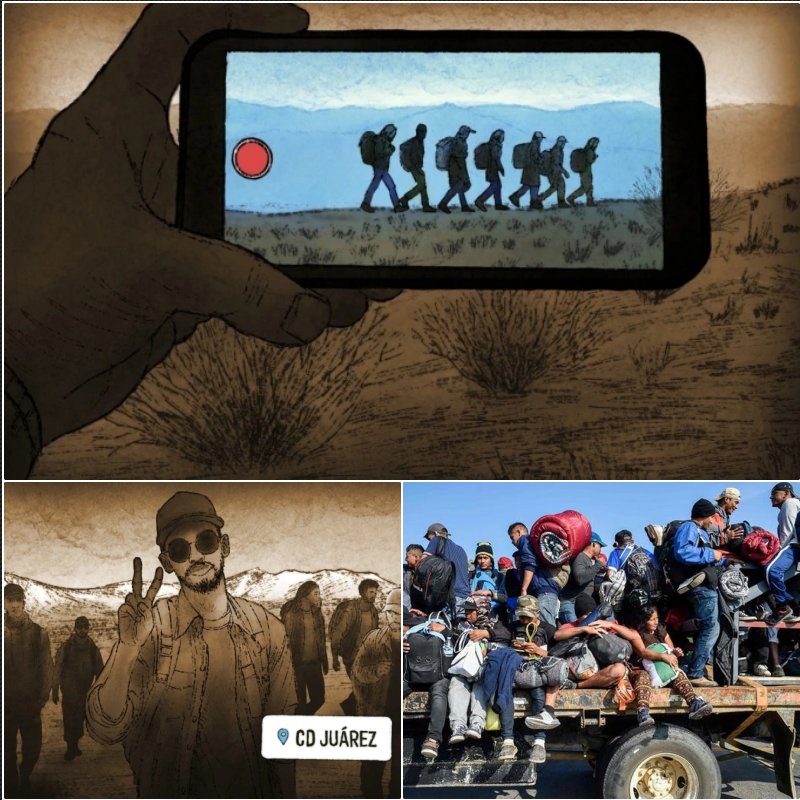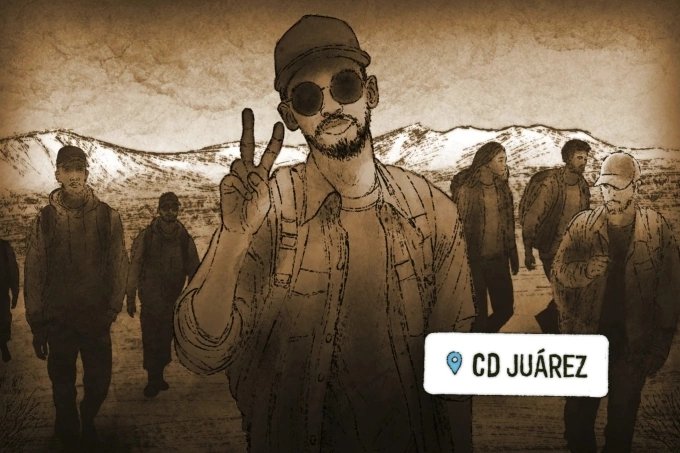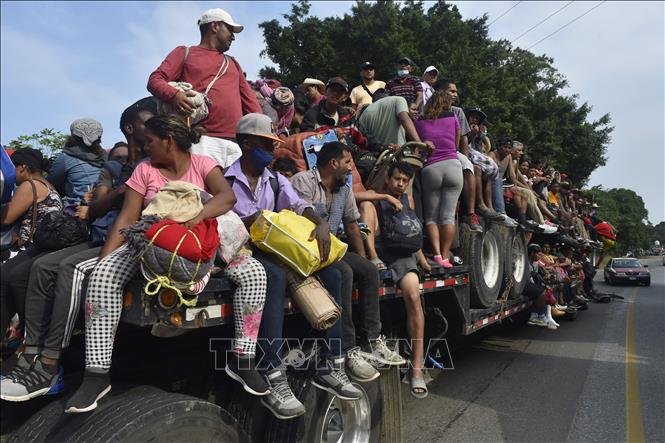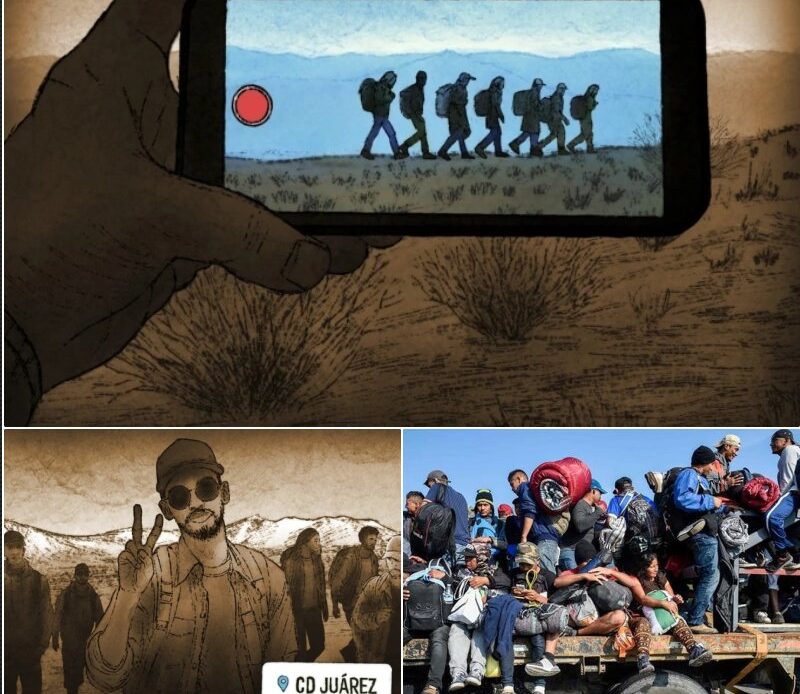The US-Mexico border crisis has been a hot-button issue for years, but a new factor is playing an unexpected role in the surge of migrants—**social media, specifically TikTok**. While traditional migration patterns have long been driven by economic opportunity, political instability, and humanitarian crises, recent evidence suggests that **viral TikTok videos are actively encouraging people to make the dangerous journey north**.
With millions of views and shares, these videos portray **crossing the border as easier, safer, and more rewarding than it actually is**. The reality, however, is far more complex. Many migrants, lured by misleading content, **face life-threatening conditions, legal struggles, and financial ruin upon arrival**.
## How TikTok is Influencing Migration Patterns

### 1. **The Rise of “Migration Influencers”**
Social media influencers exist in every industry, from fashion to finance—but a new breed of **”migration influencers”** has emerged on TikTok. These individuals, often former migrants themselves, create videos detailing their border-crossing experiences, sometimes **exaggerating or outright misrepresenting the process**.
Their content often includes:
– **Step-by-step guides** on how to navigate border crossings
– **Tips for avoiding authorities** or finding loopholes in immigration policies
– **Success stories** that make the journey seem guaranteed and risk-free
– **Warnings about “fake dangers”** that downplay the actual risks involved
These videos rack up millions of views, spreading rapidly across **Latin America, Africa, and even parts of Asia**. Many potential migrants, desperate for a better life, **take these videos as factual advice, not realizing the full scope of what awaits them**.
### 2. **False Promises of Asylum and Work Opportunities**

One of the most common themes in these TikTok videos is the claim that **anyone who reaches the US will be granted asylum and receive financial support**. While **asylum laws do provide protections**, the system is overwhelmed, and many claims are **denied or delayed for years**.
Additionally, some videos falsely state that migrants **automatically qualify for government aid, housing, or high-paying jobs upon arrival**. In reality:
– **Many migrants struggle to find work and shelter**
– **Some end up in detention centers or deported**
– **Others fall victim to trafficking, scams, or criminal networks**
This misinformation **creates false hope**, leading many to make the perilous journey under **completely unrealistic expectations**.
### 3. **Downplaying the Dangers of Illegal Crossings**
TikTok videos often **glorify the border-crossing experience**, making it seem like an adventurous road trip rather than a life-threatening ordeal. What they fail to mention is:
– **Extreme weather conditions** (heatstroke, dehydration, freezing temperatures)
– **Brutal terrain** (deserts, rivers, mountains)
– **Exploitation by smugglers (coyotes)** who often **abandon, abuse, or rob migrants**
– **Dangers of cartels and human traffickers** operating in border areas
Many migrants **end up stranded, arrested, or worse—losing their lives** due to false expectations set by viral social media content.
## The Realities at the US Border
### 1. **Tighter Immigration Policies**
Despite what TikTok videos claim, **US border policies are becoming more restrictive**, not more lenient. The Biden administration, like previous ones, has **implemented deportation flights, asylum restrictions, and stricter processing protocols**.
### 2. **Dangerous Smuggling Networks**
Many migrants **pay thousands of dollars to smugglers**, only to be **abandoned, extorted, or even kidnapped**. Cartels now **exploit migration routes**, using TikTok videos as bait to lure people into their networks.
### 3. **Legal and Financial Hardships**
Crossing the border is just the beginning. Migrants often **arrive with no legal status, no housing, and no work prospects**. Many **fall into homelessness, illegal labor, or crime**—a stark contrast to the “American Dream” painted on social media.
## Who is Behind These Videos?

While some videos are made by **real migrants sharing experiences**, others are produced by:
– **Smuggling networks**, using TikTok as free advertising
– **Political groups**, pushing misinformation for their own agendas
– **Scammers**, trying to lure desperate migrants into paying for fake services
TikTok’s **lack of regulation** on such content allows these videos to spread unchecked, **fueling the border crisis further**.
## What Can Be Done?
### 1. **Holding TikTok Accountable**
Social media platforms must **take responsibility for stopping the spread of misleading and dangerous content**. Governments and tech companies need to:
– **Flag and remove false information** about border crossings
– **Improve AI detection of migration misinformation**
– **Educate users on the real risks of illegal migration**
### 2. **Raising Awareness in Migrant Communities**
Potential migrants need **access to accurate information** about immigration policies, asylum procedures, and the realities of life in the US. Governments and NGOs should:
– **Launch fact-checking campaigns on social media**
– **Provide resources in multiple languages**
– **Work with local communities to spread truthful information**
### 3. **Addressing the Root Causes of Migration**
Instead of **just reacting to migration surges**, world leaders must **tackle the economic, political, and security crises** that push people to flee their home countries. This means:
– **Investing in job opportunities abroad**
– **Improving human rights protections**
– **Strengthening regional cooperation** to manage migration effectively
## Conclusion

The **TikTok-fueled migration surge** is a modern crisis that highlights the **power—and danger—of viral misinformation**. While social media has the potential to inform and connect, it also enables **false promises, scams, and life-threatening risks**.
For those considering the journey to the US, **understanding the truth is crucial**. No TikTok video can fully capture the dangers and challenges ahead. Before making life-changing decisions, migrants must **seek real, verified information—not social media myths**.
It’s time to expose the **shocking truth** behind these viral videos—before more lives are lost.
